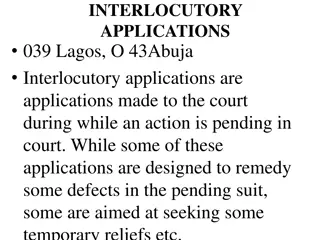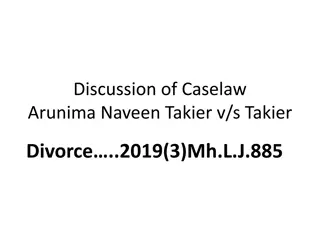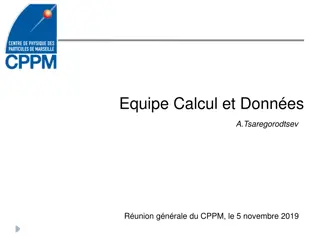
Team Development Stages and Dynamics in Complementary Schools
Explore the stages of team development in complementary schools, from forming to adjourning, and learn about the factors that determine team effectiveness or ineffectiveness. Delve into Tuckman's model and understand the key characteristics of each stage - forming, storming, norming, performing, and adjourning. Gain insights into what makes a team work well and what leads to dysfunction, with practical examples and strategies for effective teamwork.
Download Presentation

Please find below an Image/Link to download the presentation.
The content on the website is provided AS IS for your information and personal use only. It may not be sold, licensed, or shared on other websites without obtaining consent from the author. If you encounter any issues during the download, it is possible that the publisher has removed the file from their server.
You are allowed to download the files provided on this website for personal or commercial use, subject to the condition that they are used lawfully. All files are the property of their respective owners.
The content on the website is provided AS IS for your information and personal use only. It may not be sold, licensed, or shared on other websites without obtaining consent from the author.
E N D
Presentation Transcript
LEADERSHIP IN COMPLEMENTARY SCHOOLS Funded by BELMAS (RG/16/16) Workshop (Part B) Linet Arthur & Ana Souza Centro Brasileiro, London 3rd June 2017
(B) SESSION 1 Team working
B.1 - Activity A Consider a team in which you have worked which you regard as either effective or ineffective. Identify: i) What makes a team work well ii) What makes a team work badly
B.2 TEAM DEVELOPMENT STAGES Tuckman s model of team development (1965) based on analysis of research literature 1.Forming 2.Storming 3.Norming 4.Performing
B.2.1 Forming Members wonder why they are there, i.e. what the task is, what they are expected to do, who the others are in the group and what the roles of the others are. This stage can be returned to every time the membership of the group or team changes. Anxiety dominates the group
B.2.2 Storming Value and feasibility of task is questioned; principles and methods are debated. Opinions are polarised between loyalty and resistance to leader/to task; individual contributions are frequently challenged: members are testing each other; territorial behaviours may appear. There is no productive work at this stage. Conflict dominates the group
B.2.3 Norming Planning starts; principles are agreed; understanding of working relationships are established: roles are clarified. A sense of team identity begins to emerge; people are free to say what they feel. Mutual support is a strong feature.
B.2.4 Performing Solutions to problems emerge; time is used efficiently in working procedures; the quality of results improves: things get done. Roles are flexible: there is a good mutual understanding of how members of the team work; individuals and the team are confident. Trust and confidence characterise the team at this stage.
B2.5 ADJOURNING Team members disengage after completing the task. There may be sadness at saying goodbye alongside satisfaction about the outcomes which have been achieved.
B.3 Problems with Tuckman s Model Linear Static development Reality? Shifts in interpersonal relationships Historical, political and social contexts Adjourning Under performing? Grieving?
B.4 BELBINS TEAM ROLES http://www.belbin.com/about/belbin-team-roles/
B.4.1 BELBINS TEAM ROLES Plant Plants tend to be intelligent and highly creative innovators and inventors. They are often able to offer solutions to complex problems. They may be introverts and behave independently, however, and their radical ideas may create disagreement and conflict within the team. Resource Investigator Resource Investigators have excellent communication skills and are able to find resources which help to achieve the team s task. They tend to be extroverts and are quick to see the possibilities in new ideas. Their enthusiasm may fade rapidly, however.
B.4.2 BELBINS TEAM ROLES Co-ordinator Coordinators help others to achieve shared goals. They tend to be mature and confident, with a broad outlook. They are able to spot individual talents and delegate effectively. They may have a tendency to manipulate, however, and sometimes clash with Shapers. Shaper Shapers have drive and energy and are goal- oriented. They tend to be assertive and directive with a decisive management style. They like to win and work well under pressure. They can, however, be aggressive and insensitive. They may clash with Co-ordinators.
B.4.3 BELBINS TEAM ROLES Monitor Evaluator Monitor evaluators are prudent, able to think critically and to make shrewd judgements. They are unlikely to allow emotions to get in the way of logical solutions. They can, however, be seen as too critical and may be slow to make decisions. Implementer Implementers work hard and systematically. They are practical and self- controlled, often loyal to their organisation. They may, however, find it difficult to accept new ideas and ways of doing things.
B.4.4 BELBINS TEAM ROLES Teamworker Teamworkers like to create harmony and are generally supportive and look after colleagues. They tend to be perceptive, caring and good listeners. Their wish to avoid conflict can make them indecisive, however. Completer-Finisher Completer-Finishers strive for perfection. They pay attention to details and complete their work on time and to the highest standards. Completer- Finishers may be reluctant to delegate or trust others to do work to the correct standard.
B.4.5 BELBINS TEAM ROLES Specialist Specialists have a love of learning and are single-minded in their pursuit of knowledge. They are likely to be used by colleagues as a source of expertise and guidance. They are less interested in social aspects of the team and may be inflexible.
B.4.6 ACTIVITY B Think about the team in which your work predominantly takes place. Which of Belbin s team roles are covered? If any roles are missing, how well (or badly) is the team working?
B. 4.7 PROBLEMS WITH BELBIN? Number of people on school teams Appointments school leaders may have other priorities than the balance of team roles New leaders may inherit existing teams which are deficient in relation to some of the roles
B.5 OBSTACLES TO TEAM EFFECTIVENESS (MIDDLEWOOD, 2003 CITED IN BUSH AND MIDDLEWOOD, 2005) Teacher skills Personality clashes Absentees Intolerance by some team members Shy staff dominated by others Low morale and motivation caused by increased workload
B.6 EFFECTS OF POOR TEAMWORK (Hambrick, 1995 in Woodfield and Kennie, 2008) Harmful rivalries between individuals Groupthink : too much pressure to agree Fragmentation: individual fiefdoms and lack of collective responsibility
B.7 LEADERSHIP IN TEAMS (Morgeson et al, 2010) Transition phase leadership functions Compose team Define mission Establish expectations and goals Structure and plan Train and develop team Sense making Provide feedback Action phase leadership functions Monitor team Manage team boundaries (between the team and the organisation) Challenge team Perform team task Solve problems Provide resources Encourage teams self- management Support social climate
Watch Part C: Thinking Strategically






